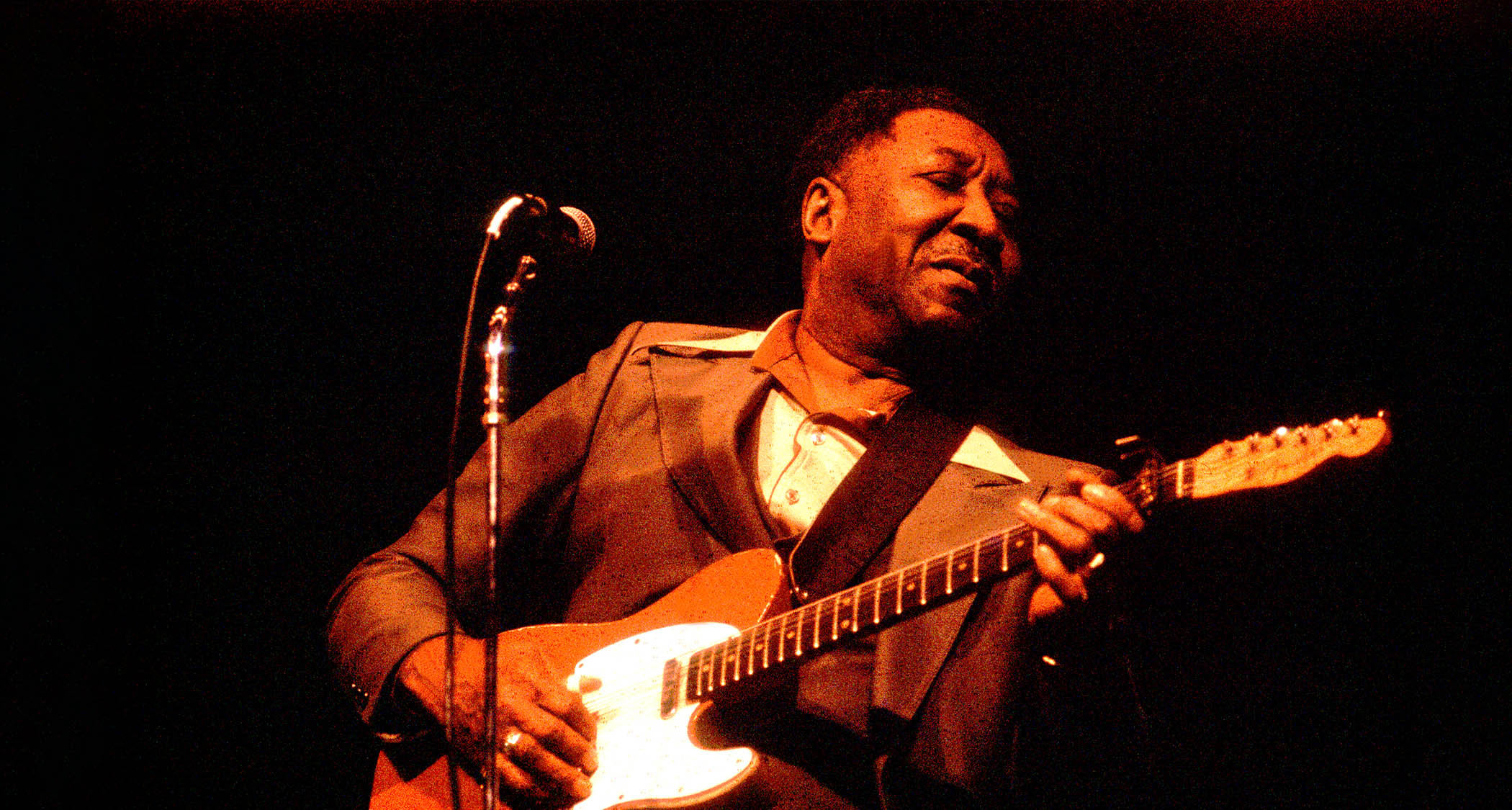
There are few figures in blues history as notable as Muddy Waters. Born McKinley Morganfield in 1913, Muddy was cetral to the evolution of the genre, from its beginnings as the folk music of the southern states to the electrified Chicago sound that served as a bedrock for all later guitar-based music.
Like many early blues artists, Muddy’s musical education came from church. Singing in Sunday service and emulating local musicians gave him a rich education and deep connection to the country-blues tradition.
By his teens he was supporting his powerful voice with intricate blues guitar work and harmonica embellishments, but his career would really take off when he moved to Chicago in the early ’40s.
Arriving in the big city, Muddy realised he would need to amplify his guitar in order to be heard over the crowds of the music clubs. In doing so, he helped to develop the sound of electric guitar as we know it and secure its place at the forefront of popular music.
His music during these years was raw and emotive. The cranked amplifiers delivered a rugged, powerful tone that perfectly suited the music’s primal nature. The licks may be considered somewhat primitive when we listen with modern ears but then it was the dawn of an exciting style never heard before. Muddy and others were essentially inventing a language, and so the study of this source material is vital for any blues guitarist.
Our solos in this lesson focus on Muddy’s early electrified sound, the first being a guitar slide piece in open G tuning (D-G-D-G-B-D). This tuning was traditional for many country blues slide players, and many of Muddy’s early recordings utilised it.
If it’s unfamiliar to you, we recommend spending a little time exploring the fretboard. You will notice that the second, third, and fourth strings remain the same as standard tuning, so familiar shapes will still work here.
The remaining strings are all tuned down a tone, so a little adjustment in your thinking will be required. Do not be deterred, as this tuning can give you access to an abundance of new language.
Our second study delivers more essential vocabulary, this time in standard tuning, as Muddy switched to this later on. The vibe of this is just as important as the notes, and capturing some of Muddy’s swagger is the hardest element of emulating his style.
He would push and pull rhythms and play heavily with dynamics, so aim to capture some of these details for added authenticity. Check out as much of Muddy’s music as possible, as it’s best to learn from the real deal. Just listen to Voodoo Chile, and you’ll hear that Jimi did, too!
Get the tone
Amp Settings: Gain 5, Bass 4, Middle 7, Treble 6, Reverb
Muddy was synonymous with his red Telecaster, but many of his early tracks were recorded with a Gretsch Synchromatic or a Gibson Les Paul. These were likely paired with a tweed Fender combo amp. Aim for an edge of breakup tone with plenty of mids and treble. You may need a little more gain than expected for slide, in order to allow the notes to sustain.
Study Piece 1. Slide guitar solo in open G
Our first study demonstrates Muddy’s open G slide guitar chops and showcases some fundamental moves for this style. Intonation is always key when it comes to slide guitar, so practise these licks slowly to ensure you are dead in tune.
Fingerstyle is probably the best bet here, or pick and fingers, or perhaps thumbpick and fingers. But if you prefer to go the ‘pick only’ route, be careful of any unwanted strings ringing out.
Study Piece 2. Slow shuffle solo
We’re back in standard tuning for our second study which demonstrates Muddy’s vocabulary over a slow shuffle in E. Keeping the rhythm going is what’s important here, as the low strings provide an accompaniment for the higher-string melodies.
If this is a challenge, work on each bar individually before you put it together. The style of this piece is foundational to so much of the blues that came later, so study it carefully and learn from its simple brilliance.







